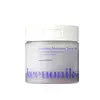What's inside
What's inside
 Key Ingredients
Key Ingredients

 Benefits
Benefits

 Concerns
Concerns

No concerns
 Ingredients Side-by-side
Ingredients Side-by-side

Water
Skin ConditioningButylene Glycol
Humectant1,2-Hexanediol
Skin ConditioningAllantoin
Skin ConditioningPolyglyceryl-10 Laurate
Skin ConditioningPentylene Glycol
Skin ConditioningArginine
MaskingAcrylates/C10-30 Alkyl Acrylate Crosspolymer
Emulsion StabilisingEthylhexylglycerin
Skin ConditioningCaprylyl Glycol
EmollientDisodium EDTA
Ammonium Acryloyldimethyltaurate/Vp Copolymer
Maltodextrin
AbsorbentHydrolyzed Gardenia Florida Extract
AntioxidantHydrolyzed Hyaluronic Acid
HumectantPanthenol
Skin ConditioningCeramide NP
Skin Conditioning2,3-Butanediol
HumectantHydrogenated Lecithin
EmulsifyingGlyceryl Stearate
EmollientSodium Hyaluronate
HumectantCholesterol
EmollientCeramide As
Skin ConditioningCeramide AP
Skin ConditioningCeramide Ns
Skin ConditioningHydroxypropyltrimonium Hyaluronate
Sodium Acetylated Hyaluronate
HumectantHyaluronic Acid
HumectantHydrolyzed Sodium Hyaluronate
Skin ConditioningSodium Hyaluronate Crosspolymer
HumectantPotassium Hyaluronate
Skin ConditioningCeramide EOP
Skin ConditioningWater, Butylene Glycol, 1,2-Hexanediol, Allantoin, Polyglyceryl-10 Laurate, Pentylene Glycol, Arginine, Acrylates/C10-30 Alkyl Acrylate Crosspolymer, Ethylhexylglycerin, Caprylyl Glycol, Disodium EDTA, Ammonium Acryloyldimethyltaurate/Vp Copolymer, Maltodextrin, Hydrolyzed Gardenia Florida Extract, Hydrolyzed Hyaluronic Acid, Panthenol, Ceramide NP, 2,3-Butanediol, Hydrogenated Lecithin, Glyceryl Stearate, Sodium Hyaluronate, Cholesterol, Ceramide As, Ceramide AP, Ceramide Ns, Hydroxypropyltrimonium Hyaluronate, Sodium Acetylated Hyaluronate, Hyaluronic Acid, Hydrolyzed Sodium Hyaluronate, Sodium Hyaluronate Crosspolymer, Potassium Hyaluronate, Ceramide EOP
Water
Skin ConditioningChamomilla Recutita Flower Water
MaskingDipropylene Glycol
HumectantGlycerin
HumectantButylene Glycol
HumectantXylitylglucoside
HumectantAnhydroxylitol
HumectantXylitol
HumectantXanthan Gum
EmulsifyingArginine
MaskingAllantoin
Skin ConditioningCarbomer
Emulsion StabilisingSodium Hyaluronate
HumectantPolyglyceryl-10 Laurate
Skin ConditioningGlucose
HumectantDipotassium Glycyrrhizate
HumectantAzulene
Skin ConditioningDisodium EDTA
Maltodextrin
AbsorbentOlea Europaea Fruit Oil
MaskingHydrolyzed Gardenia Florida Extract
AntioxidantEthylhexylglycerin
Skin ConditioningCinnamomum Camphora Bark Oil
MaskingGlyceryl Glucoside
HumectantCanarium Luzonicum Gum Nonvolatiles
MaskingLaurus Nobilis Leaf Oil
MaskingCitrus Aurantium Dulcis Peel Oil
MaskingPelargonium Graveolens Flower Oil
MaskingZingiber Officinale Root Oil
MaskingLactobacillus Ferment
Skin ConditioningPolyglutamic Acid
Skin ConditioningSparassis Crispa Extract
Emulsion StabilisingThamnolia Vermicularis Leaf Extract
Skin ConditioningWater, Chamomilla Recutita Flower Water, Dipropylene Glycol, Glycerin, Butylene Glycol, Xylitylglucoside, Anhydroxylitol, Xylitol, Xanthan Gum, Arginine, Allantoin, Carbomer, Sodium Hyaluronate, Polyglyceryl-10 Laurate, Glucose, Dipotassium Glycyrrhizate, Azulene, Disodium EDTA, Maltodextrin, Olea Europaea Fruit Oil, Hydrolyzed Gardenia Florida Extract, Ethylhexylglycerin, Cinnamomum Camphora Bark Oil, Glyceryl Glucoside, Canarium Luzonicum Gum Nonvolatiles, Laurus Nobilis Leaf Oil, Citrus Aurantium Dulcis Peel Oil, Pelargonium Graveolens Flower Oil, Zingiber Officinale Root Oil, Lactobacillus Ferment, Polyglutamic Acid, Sparassis Crispa Extract, Thamnolia Vermicularis Leaf Extract
Ingredients Explained
These ingredients are found in both products.
Ingredients higher up in an ingredient list are typically present in a larger amount.
Allantoin is a soothing ingredient known for its protective and moisturizingg properties. Because of this, it is often added to products with strong active ingredients.
Studies show higher concentrations of this ingredient can promote wound healing.
Though it can be derived from the comfrey plant, allantoin is produced synthetically for cosmetic products to ensure purity.
Learn more about AllantoinArginine is an amino acid that is important for human development. Your body uses is it to produce hair keratin and skin collagen.
As a cosmetic ingredient, Arginine has antioxidant properties and can also help repair damaged skin. This ingredient is derived either synthetically or from animals.
Arginine isn't fungal acne safe when used in the presence of other lipids (fats, fatty acids, oils, esters, etc). Oils and fats occur naturally within the skin, so take caution when using Arginine if you're prone to fungal acne.
Learn more about ArginineButylene Glycol (or BG) is used within cosmetic products for a few different reasons:
Overall, Butylene Glycol is a safe and well-rounded ingredient that works well with other ingredients.
Though this ingredient works well with most skin types, some people with sensitive skin may experience a reaction such as allergic rashes, closed comedones, or itchiness.
Learn more about Butylene GlycolDisodium EDTA plays a role in making products more stable by aiding other preservatives.
It is a chelating agent, meaning it neutralizes metal ions that may be found in a product.
Disodium EDTA is a salt of edetic acid and is found to be safe in cosmetic ingredients.
Learn more about Disodium EDTAEthylhexylglycerin (we can't pronounce this either) is commonly used as a preservative and skin softener. It is derived from glyceryl.
You might see Ethylhexylglycerin often paired with other preservatives such as phenoxyethanol. Ethylhexylglycerin has been found to increase the effectiveness of these other preservatives.
Hydrolyzed Gardenia Florida Extract is an antioxidant.
Maltodextrin is a polysaccharide. It is derived from starch such as rice, corn, wheat, or potato starch.
In food, Maltodextrin is used to improve the texture and thicken a product. Due to its structure, it can help create a gel texture. As an emulsion stabilizer, it helps keep the ingredients in a product together.
As a polysaccharide, Maltodextrin has moisturizing properties. Polysaccharides are a type of carbohydrate. The top layer of skin uses polysaccharides to retain water, keeping the skin hydrated.
Maltodextrin is water soluble and has a sweet taste.
Learn more about MaltodextrinPolyglyceryl-10 Laurate is an ester of lauric acid and Polyglycerin-10.
Polyglyceryl-10 Laurate is a cleansing agent and emulsifier. It helps gather dirt, oil, and other pollutants to be rinsed away. As an emulsifier, it helps prevent ingredients from separating, such as oil and water.
Polyglyceryl-10 Laurate may not be fungal acne safe.
Learn more about Polyglyceryl-10 LaurateSodium Hyaluronate is hyaluronic acid's salt form. It is commonly derived from the sodium salt of hyaluronic acid.
Like hyaluronic acid, it is great at holding water and acts as a humectant. This makes it a great skin hydrating ingredient.
Sodium Hyaluronate is naturally occurring in our bodies and is mostly found in eye fluid and joints.
These are some other common types of Hyaluronic Acid:
Learn more about Sodium HyaluronateWater. It's the most common cosmetic ingredient of all. You'll usually see it at the top of ingredient lists, meaning that it makes up the largest part of the product.
So why is it so popular? Water most often acts as a solvent - this means that it helps dissolve other ingredients into the formulation.
You'll also recognize water as that liquid we all need to stay alive. If you see this, drink a glass of water. Stay hydrated!
Learn more about Water